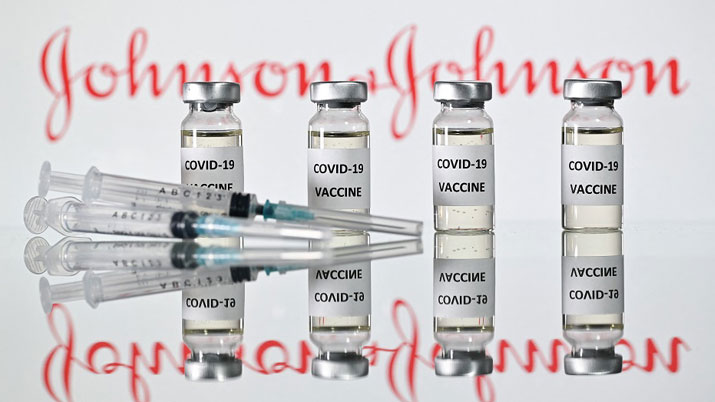The entire population worldwide is anxious about getting vaccinated, and most of us have either been partially (atleast first dose) or fully vaccinated. Though there are long debates and experts have been discussing and talking about the pros and cons of different vaccines throughout the globe. Though the vertex concern of the discussions are always regarding the extent of their efficiency but the whole scenario falls apart upon the side effects. Although beforely, the known side- effects ranged from blood clots, heart inflammation, but now, there’s now a new danger that seems to lurk with the administration of certain COVID-19 vaccines- Guillain Barre Syndrome (GBS), a rare, but serious neurological disorder. The FDA has now added a note of warning with one of the COVID-19 vaccines being approved for use, Johnson and Johnson’s Jannsen one-dose vaccine after some cases of neurological complications were reported after administration of the novel single-dose vaccine.
Guillain-Barre syndrome is a rare disorder in which your body’s immune system attacks your nerves. Weakness and tingling in your extremities are usually the first symptoms. These sensations can quickly spread, eventually paralyzing your whole body. In its most severe form Guillain-Barre syndrome is a medical emergency. Most people with the condition must be hospitalized to receive treatment.
The exact cause of Guillain-Barre syndrome is unknown. But two-thirds of patients report symptoms of an infection in the six weeks preceding. These include respiratory or a gastrointestinal infection or Zika virus.
The FDA has considered issuing an advisory with the usage of the Jannsen COVID-19 vaccines after at least 100 cases of Guillain Barre Syndrome were identified in people who had been vaccinated with the single-dose COVID-19 vaccine shot in the USA.
While the classification of the condition is still rare, out of the total 13 lakh people inoculated with the novel vaccine, 95 of the 100 cases were found to be ‘serious’ in nature, requiring hospitalization, with one death recorded as well, accounting for it to be an adverse and serious reaction post-vaccination. The incidents of Guillain Barre Syndrome and related symptoms were found to happen roughly 6 weeks post inoculation, which was later confirmed by Johnson and Johnson as well.
As per WHO, the syndrome, which primarily attacks the nerves, affects the peripheral nerves which control muscle reaction, neuro-transmission, sensations, touch and connections. GBS has been termed to be a serious, threatening adverse reaction with the Johnson and Johnson COVID-19 vaccine right now. Medically, it is considered to be an autoimmune reaction, or flare-up, since it is an attack launched by the body’s own defences. Upon infection threat (or infection mimicked by a vaccine), the WBCs and antibodies put in charge to protect the body mistakenly attack the healthy cells and cause problems to vital organs. The risks with GBS are flagged to potentially be serious and require hospitalization because in this case, the immune system launches an attack on the healthy nerves, which are crucial to our functioning. The peripheral nervous system, which is impacted by Guillain Barre Syndrome is involved in connecting our central line nerves to major organs and parts of the body, including vital organs, limbs and the skin, and thus, any symptoms need to be treated at once and often require additional treatment or hospitalization.
As found by authorities, while vaccination-related GBS in most cases has required hospitalization, one of the cases also led to death and hence, classified as a serious adverse threat, much like blood clotting and myocarditis risk with vaccines.
While most cases of GBS have been unfortunately recorded with the J and J COVID vaccine, it’s not the only vaccine that has come into question. Most recently, the Oxford-Astrazeneca vaccine (sold and marketed as Covishield in India) was linked to some neurological damages in some of the people who had been vaccinated. A total of 11 cases (7 from Kerala, India and 4 from Nottingham, UK) were recorded, wherein the beneficiaries had received the COVID-19 vaccine 10-22 days prior to the incidents.
Surprisingly, both the Jannsen and the Astrazeneca vaccine have been found to carry similar adverse side-effects post inoculation, including blood clots and now, neurological damage.
In general terms, Guillain-Barre syndrome is known to occur in several forms. The main types are:
- Acute inflammatory demyelinating polyradiculoneuropathy (AIDP),the most common form in North America and Europe. The most common sign of AIDP is muscle weakness that starts in the lower part of your body and spreads upward.
- Miller Fisher syndrome (MFS),in which paralysis starts in the eyes. MFS is also associated with unsteady gait. MFS is less common in the U.S. but more common in Asia.
- Acute motor axonal neuropathy (AMAN) and acute motor-sensory axonal neuropathy (AMSAN)are less common in the U.S. But AMAN and AMSAN are more frequent in China, Japan and Mexico.
WHO and Johnson and Johnson have listed the following are the primary symptoms of the nervous syndrome which needs medical attention ‘right away’:
-Weakness and tingling sensations, in the legs and arms.
-Swelling or reactions in the body
-Facial numbness or weakness
-Loss of sensation
-Problems with vision (double vision/ difficulty in moving eyes)
-Difficulty walking, making movement
-Difficulties with facial movement, including speaking, chewing or swallowing.
-Poor bladder control
There’s no known cure for Guillain-Barre syndrome, but several treatments can ease symptoms and reduce the duration of the illness. Although most people recover from Guillain-Barre syndrome, the mortality rate is 4% to 7%. Between 60-80% of people are able to walk at six months. Patients may experience lingering effects from it, such as weakness, numbness or fatigue.


